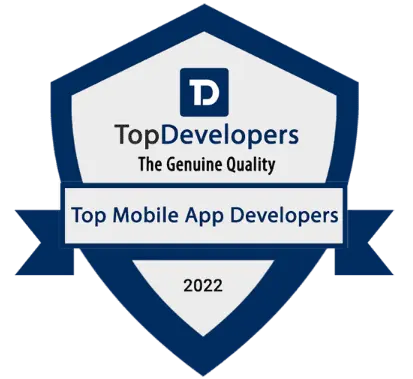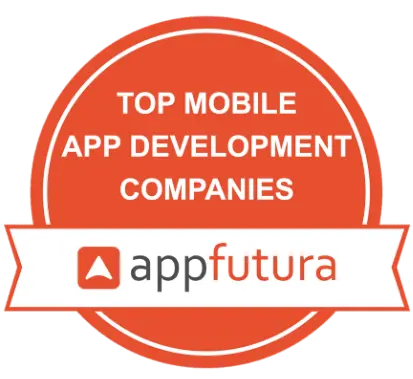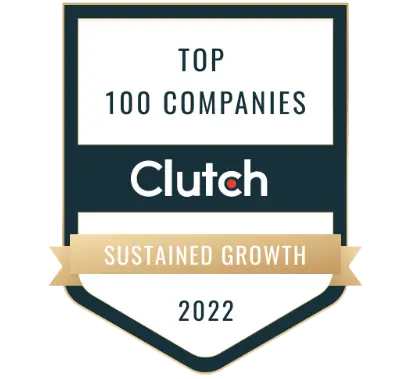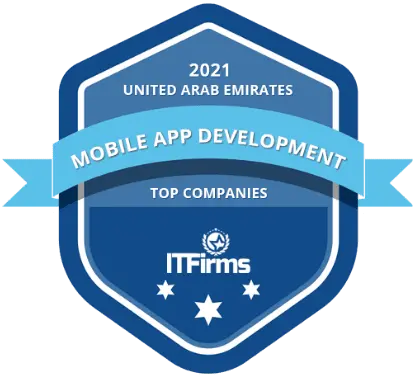What if you could build the next big name in video streaming and capitalize on a market expected by Statista to reach over $115 billion in the U.S. by 2026?
As per the Pew Research 2024, Americans consume an average of 3.1 hours per day of on-demand content. Thus, the demand for premium streaming is rapidly expanding. Entrepreneurs and media companies are racing to develop an application similar to HBO Max to reach this growing audience.
HBO Max took entertainment to a new level by combining movie blockbusters, award-winning originals and cross-device streaming, all while promising to make it easier to access content. Because of this, startups and companies interested in developing a video streaming app must understand the costs, processes and technologies involved before moving to production. In this guide, we will provide all of the information you need, from market data and features to server tech stacks, app development costs, and everything in between, to help you plan for the success of your video streaming app.
Pro Tip: Validate your business idea with a small audience in a pilot study before beginning development to track which content your audience supports and how willing they will be to subscribe.
What is HBO Max? – Market Stats
Picture opening an app/website and being presented with blockbuster movies, award-winning series, and exclusive original programming. This is what HBO Max is about! HBO Max was rolled out by Warner Bros. Discovery, and it is quickly becoming one of the top video streaming services available today, with 35,000+ hours of content, including award-winning shows like Succession and Game of Thrones.
Recent streaming statistics demonstrate the great demand for content like HBO Max’s. In the U.S., it is reported by Statista that 88% of households use at least one paid video streaming service each month, and the average household has 4.5 video streaming subscriptions. The global video streaming market size was estimated at USD 129.26 billion in 2024 and is projected to reach USD 416.8 billion by 2030, growing at a CAGR of 21.39%. The larger audience adoption of streaming services demonstrates the appeal of wanting to develop an HBO Max-sized service.
Key U.S. Market Highlights
- Revenue Growth: The U.S. video streaming market is expected to top $115 billion in size by 2026, with a CAGR of over 14%.
- User Base: By early 2025, HBO Max had approximately 95 million subscribers worldwide, with the majority being in the United States.
- User Engagement: In the U.S., users spend over 3 hours a day streaming video, statistically increasing every year.
Pro Tip: You may want to study competitors, such as Netflix, Disney+, and Hulu, to discover something different or unique in their service or content in order to build a unique access point for your platform.
How to Develop an App Like HBO Max? (Step-by-Step Process)
Building a high-quality video streaming app involves more than just code. It’s a systematic process of planning, designing, selecting technology, and iterating. Here is an outlined roadmap to help you plan how to build an app like HBO Max.
1. Market Research and Competitor Assessment
Before you write a single line of code, you need to understand who your audience is, along with who your competitors are.
- Competitor Analysis: Consider platforms like Netflix, Disney+, Hulu, and HBO Max.
- User Expectations: Statista (2025) indicates that over 55% of viewers in the U.S. choose streaming platforms primarily based on their exclusive content offered on them.
- Identify Gaps: Perhaps there are interests users have, such as anime, documentaries, or local films, that are typically not catered for by larger streaming services.
Pro Tip: Run small surveys or focus groups before investing. Real user feedback can save thousands in unnecessary development costs.
2. Defining Your Business Model
Your approach to business defines what the app will look like and what technology stack will need to be used.
- Subscription Video on Demand (SVOD): Netflix/HBO Max-like offering
- Ad-supported video on Demand (AVOD): Free and ad-supported, like Tubi or Pluto TV
- Transactional (TVOD): Pay-per-view and/or rental model
- Hybrid model: both subscription and ad-supported
For example, a startup might begin with AVOD to build users quickly, then later shift to hybrid monetization.
3. Content Strategy & Licensing
No streaming app will survive without content available for consumption. Decide whether you will:
- Create Original Content (expensive, but valuable)
- License Existing Shows/Movies (somewhat expensive, but quick to fill the library)
- Collaborate with Independent Creators (no financial requirement)
Case Study: HBO Max invests significantly in original content (such as House of the Dragon), which enhances customer loyalty, while Peacock opts for a combination of original content alongside licensed shows from NBCUniversal to expand its library.
4. Select Your Technology Stack
The technology behind your app will dictate its performance and scalability.
- Frontend: React Native, Flutter, Swift (iOS), Kotlin (Android).
- Backend: Node.js, Django, or Java Spring Boot.
- Database: PostgreSQL, MongoDB.
- Media Streaming: AWS Media Services, Wowza, or Brightcove.
- CDN (Content Delivery Network): Cloudflare, Akamai, or AWS CloudFront.
- Security: DRM solutions, such as Widevine or PlayReady.
Tip: Invest early in a scalable backend; sudden traffic spikes during a new show launch can crash underprepared systems.
5. User Interface & User Experience Design
The user interface is where first impressions are made. The bold use of purple and seamless navigation from HBO Max helped define their brand.
Design basics include:
- Personalized dashboards
- Easy searching and filtering
- Multi-profile capability
- Seamless video player UI with skip intro, captions, and resolution settings
Pro Tip: Keep designs consistent across mobile, desktop, and TV apps. Consistency builds trust and familiarity.
6. Minimum Viable Product (MVP)
Instead of launching with too many features all at once, launch with a Minimum Viable Product (MVP). The core MVP features that it must constitute are:
- Registration & login
- Video streaming player
- Basic recommendations
- Subscription/payment integration
This approach allows faster entry into the market, and you can leverage real user-collected data before scaling.
7. Adding Complex Features
Once you’ve established an MVP, you can add many of the more popular features:
- Offline Downloads
- AI-Powered Recommendations
- Live Streaming for Events
- Social Sharing & Watch Parties
Stat Highlight: According to Deloitte, 41% of Gen Z streamers prefer apps with social watch-party features, making it a competitive differentiator.
8. Testing and Quality Assurance
Conducting comprehensive testing allows you to ultimately create a bug-free product and a great user experience.
- Functional Testing: Do videos play? Do subscriptions function?
- Performance Testing: Does it hold up in high-traffic scenarios?
- Cross-Device Testing: Does the app work on iOS, Android, Web, and Smart TVs?
- Security Testing: Is there protection against content leaks or payment fraud?
Tip: As a result, using an automated test framework such as Selenium or Appium will help get your QA cycles completed faster.
9. Deployment and App Store Submission
When your app is ready, you will deploy it on multiple:
- App Stores: Google Play, Apple App Store
- Smart TVs: Roku, Fire TV, Apple TV, and Android TV
- Web Browsers: Chrome, Safari, Firefox, and Edge.
Pro Tip: Make sure to follow app store optimization (ASO) best practices. When doing so, use relevant keywords in both your title and the description to get ranking placement, e.g. “video streaming app” and “an app similar to HBO Max”. Here is an ultimate guide on Apple TV app development.
10. Post-Launch Support and Maintenance
Realistically, once the app is launched, your work isn’t over yet. Updates will keep your app competitive:
- Launch new features every 2-3 months
- Listen for crashes and user complaints
- Stay on top of OS updates
- Scaling the server infrastructure to support users and throughput.
On average, roughly 15 – 30% of annual development allocated is for ongoing maintenance.
11. Marketing and Growth Strategy
Lastly, no matter how great your app is, if no one is aware that it exists, users will not come. To acquire your user base, you will need to utilize methods of marketing, which consist of:
- Digital Advertising: On platforms such as YouTube, Instagram, and TikTok.
- Content Marketing: Blogs, reviews, case studies, etc.
- Reach out to Influencers: Tech reviewers and niche creators with similar follower counts as your expected app users.
For instance, HBO Max experienced rapid subscriber growth in the U.S. due in large part to aggressive bundling partnerships with AT&T, which provided free subscriptions to the telecommunications company’s existing customers.
In developing an application like HBO Max, coding is not the only consideration. It is a total consideration that includes business strategy, content strategy, tech architecture, maintenance, and ongoing development. The more detailed you are in your plan, the easier and less expensive your development will be.
Cost to Develop an App Like HBO Max
Estimating the costs of building a large-scale video application is complex because costs will vary depending on where the team is located, which features are being built, and tech decisions. However, existing market data for 2024-2025 shows a typical baseline of USD 120,000 to USD 550,000 for the first production release. For enterprise-grade deployments, costs topped $1,000,000, once you factor in licensing costs for the content and marketing costs.
Below is a detailed breakdown of the development cost of an app like HBO Max:
1. Average Development Cost by Region
| Region / Country | Hourly Rate (Full-stack Team) | Estimated Total Cost (6–12-month build) |
|---|---|---|
| United States & Canada | $100 – $200 | $350K – $550K |
| Western Europe | $80 – $150 | $250K – $400K |
| Eastern Europe | $40 – $70 | $150K – $280K |
| India & Southeast Asia | $25 – $50 | $120K – $220K |
Pro Tip: Many U.S. startups reduce cost by using a “hybrid” model, core architecture handled in-house or onshore, feature development offshored, often trimming 25–30% of total spend.
2. Stage-Wise Cost Breakdown
| Development Stage | Typical Time (Weeks) | Cost Range (USD) |
|---|---|---|
| Discovery & Market Research | 2-4 | $8K – $20K |
| UI/UX Design | 4-6 | $15K – $40K |
| Backend & API Development | 12-20 | $40K – $120K |
| Frontend (Mobile + Web) | 12-20 | $35K – $90K |
| Smart TV/OTT App Builds | 6-12 per platform | $20K – $60K each |
| Testing & QA | 4-8 | $10K – $30K |
| Deployment & App Store Prep | 2-3 | $5K – $15K |
| Initial Marketing & Launch | 4-8 | $30K – $100K |
Note: Costs assume a core feature set, user profiles, adaptive video playback, subscriptions, and basic AI recommendations. Advanced personalization or large-scale live streaming can push figures much higher.
3. Cost Impact of Core Features
Every new feature adds engineering hours and cloud resources:
| Feature Set | Additional Cost |
|---|---|
| Offline Viewing & DRM | +$20K – $40K |
| Multi-Profile & Parental Controls | +$10K – $25K |
| AI-Driven Recommendations | +$15K – $30K |
| Live Event Streaming & Chat | +$20K – $50K |
| Watch-Party / Social Features | +$10K – $20K |
Pro Tip: Launch an MVP first (registration, streaming, payment) and roll out advanced features after real-world testing to avoid over-engineering.
4. Cloud Infrastructure & Ongoing Costs
Developing the application is only half the story. Video streaming platforms depend on a reliable, scalable infrastructure, which includes the pricing estimates below:
- Cloud Hosting & CDN (AWS, GCP, Azure): $5K – $15K monthly for ~100K monthly active users
- Data Storage for HD/4K libraries: $0.02 – $0.05 per GB per month.
- 24/7 Monitoring & DevOps: $3K – $10K monthly.
Annual maintenance costs typically equal about 15-30% of the original custom mobile app development costs. This maintenance will range from $20,000 to $150,000 per year for standard updates, security updates, and scaling costs.
5. Licensing and Creating Content
HBO Max prides itself on its premium originals. The cost to license a Hollywood film or produce an original is not only outsized when compared to pure development expenses:
- Hollywood Blockbuster Film Licensing: $50K – several million per story / per season.
- Cost to Produce an Original Series: Industry figures show that the cost of scripted drama production is over $2 million per episode.
Tip: For a startup like yourself, aim for niche content or regionally based content, and negotiate revenue upfront to limit upfront licensing costs.
6. Marketing and User Acquisition
Once you have a great-looking app, you’ll need to devote resources to acquiring users:
- Expect to pay somewhere between $50K – $250K on U.S. launch campaigns during the first 3-6 months, which is an estimation based on influencer marketing costs, app-store advertising, and connected-TV advertising. These would be just a start.
- Proliferation players such as HBO Max have marketing budgets in the hundreds of millions of dollars annually, but you can scale your marketing budget based on your subscription revenue.
Let’s Do Some Quick Realities
- Lean MVP (Mobile + Web only): $120K – $180K
- Full Feature Cross-Platform (Mobile, Web, Smart TV, DRM, AI): $250K – $550K
- Enterprise Scale with Originals + Global Rollout: $1 million+
Ultimately, the cost to build an app like HBO Max will vary depending on how ambitious your launch vision is at the end of the day. Technology is only a piece of the financial puzzle.
Factors That Affect the Cost of an App Like HBO Max
The price attached to the development of your premium streaming platform is not fixed; it is estimated based on a fluid mix of technology, business and design choices. Here are the most significant drivers of cost, with each one explained in a real-world context with examples and tips for planning below:
1. Support Platforms and Devices
- Single Platform vs Cross-Platform: If you choose only iOS or Android, you can reduce up-front costs by almost 30-40% but it also reduces your audience reach. With cross-platform builds (for example, React Native, Flutter) or separate native builds for iOS, Android, Web, and SmartTVs, your initial costs could double.
- SmartTVs and OTT Boxes: If you plan to support Roku, Fire TV, Apple TV, and Android TV, you will need extra QA cycles, UI and UX development, and engineering for each device. Depending on the family of devices, this can be estimated between $10,000 – $50,000 $, again depending on complexity.
Tip: Start with mobile + web for MVP, then roll out smart-TV versions after you achieve traction.
Read Also: How to Build An App Like Hulu?
2. App Features & Functionality
Every feature you add multiplies the time developers spend on backend logic, UI flows, and testing.
| Feature Category | Examples | Impact on Cost |
|---|---|---|
| Core Streaming | Adaptive bitrate, HD/4K playback | Essential: sets the base cost |
| Personalization | AI-driven recommendations, watch history | +$15K-$30K |
| Offline Viewing | Secure downloads, DRM | +$20K-$40K |
| Multi-Profile & Parental Controls | Custom profiles, age restrictions | +$10K-$25K |
| Interactive Add-ons | Live chat, polls during streaming events | +$20K+ |
Pro Insight: A 2025 Nielsen survey shows 73% of U.S. viewers expect personalized recommendations, making AI a near-mandatory expense.
3. Content Licensing & Rights
- Original versus Licensed Content: Creating original series, such as HBO Originals, typically entails significant costs of production, potentially into the millions of dollars per series. Licensing films from Hollywood or travel rights for live sports can start around $50,000, but it is not uncommon to see licensor costs in the millions per title, sometimes per season.
- Geographic Rights: If you want to distribute your content globally, you need separate contracts in each geographic market of interest, which will increase costs for legal fees and negotiating.
Tip: For startups, consider niche genres or regional content first; negotiate revenue-share deals to lower upfront costs.
4. Backend Infrastructure & Scalability
- Cloud Hosting & CDN: Any cloud-hosted service will charge based on bandwidth. The estimated operational costs for a mid-tier streaming app with 100K monthly active users using a solution like AWS, Google Cloud, or Azure for CDN will start at approximately $5K-15 15K per month.
- Microservices & APIs Integrations: Microservices can make scaling up your system faster; however, working with microservices and APIs requires developers with experience in these approaches, which means you may want to add an additional 15-25% to your development timelines.
- Security & DRM: You will want to have some kind of premium Digital Rights Management (DRM) (i.e. Widevine, PlayReady at approximately $10K-$30K in setup/license to protect your intellectual property.
5. Team Location and Skill Level
- United States & Western Europe: $100-$200/hour for senior developers.
- Eastern Europe (Poland, Ukraine, Romania): $40-$70/hour.
- India & Southeast Asia: $25-$60/hour.
A typical full-stack team for a 6-9 month project includes:
| Role | Average Monthly Cost (Global Range) |
|---|---|
| Project Manager | $4K-$12K |
| UI/UX Designer | $3K-$10K |
| Frontend Developer | $4K-$12K |
| Backend Developer | $5K-$14K |
| QA Engineer | $3K-$8K |
| DevOps Engineer | $4K-$12K |
Strategy: A hybrid model, core architecture by a U.S. lead team with feature development offshore, often cuts total spend by 25-30%.
Read Also: How to Develop an App Like OSN+?
6. Compliance & Legal Requirements
- Data Privacy: You will need to comply with applicable data privacy regulations in the geographic markets you are operating in. Examples of laws to consider include GDPR in the EU, CCPA in California, or other laws in other regions.
- Payment Compliance: If you are accepting credit cards, you will need to be PCI-DSS compliant.
- Age-restricted content: You may be required to have additional moderation tools or parental controls in compliance with laws for age-restricted content or the communities in which you will be operating.
Legal compliance can add anywhere from $10K-$50K for audits, legal documents, and implementation costs.
7. Design Complexity & Branding
- Upscale visual design, custom animations, cinematic UI transitions, and dark mode may increase costs by 20 to 30% but add to a premium feel.
- The bold purple colour on HBO Max and dynamic previews came from thousands of design hours and A/B testing.
8. Marketing & Launch Plan
Even the most refined app is worthless without a solid marketing effort behind it. Budget for:
- Pre-launch campaigns with influencers
- App-store optimization (ASO)
- Paid ads on YouTube, Instagram, and connected-TV applications
A roll-out in a U.S. launch market will easily run between $50K and $250K in the first month or two.
9. Ongoing Maintenance Post-Launch
Plan for ongoing maintenance at around 15 to 30% of that cost to keep your app going for the years to come. This includes:
- Bug fixes and updates that come with new operating systems
- Server monitoring and/or scaling
- Adding new features based on user feedback
It’s worth noting that every single decision, from app platform to marketing to development, will have a compounding effect on the cost to develop an app like HBO Max. By carefully anticipating feature development, outsourcing wisely, and negotiating your content rights, you can keep your app costs in check but also ensure that you deliver the quality of service that streaming app users want these days.
Conclusion
Creating a video streaming service similar to HBO Max is a large undertaking, but ultimately very rewarding. From your content strategy to the technology stack you select for the app, everything you decide will have an impact on the user experience, scalability, and, of course, cost.
We recommend launching a minimum viable product (MVP) to enter the market, solicit user feedback, and fine-tune before investing heavily in advanced features, such as artificial intelligence recommendations, live streaming, or multi-device support. Thoughtfully managing development costs, selecting features appropriately, and implementing tried-and-true revenue generation methods (subscriptions, ad-supported, licensing, partnerships, etc.) will ensure your platform can be profitable while delivering an excellent user experience.
Pro tip: Start small, focus on your niche, and then scale. Phased approaches lessen risk, optimize your budget, and ultimately build a loyal audience over the long term.
With the right features, technology, and revenue models in place, it is entirely reasonable and likely that your app will be successful and competitive (with some of the current leaders in the U.S. market or internationally) in this booming video streaming platform market. If adequately developed, your idea can become an exciting, scalable, and lucrative service. Find a list of top OTT app development companies.
Frequently Asked Questions (FAQs)
Let us discuss some of the commonly asked questions related to the development of a content app like HBO Max:
1. How much does it cost to develop an app like HBO Max?
The cost varies because of features, platforms and where your development team is located in the world. A basic MVP will usually range from $120K-$180, but versatile, multi-platform apps with full feature sets will likely cost $250K to $550K or more. Moreover, an enterprise-level app with original content for a global market may exceed $1M.
2. Which platforms should I target first: mobile, web, or Smart TV?
Most startups typically launch their MVPs in mobile (iOS + Android) and web; Smart TV and OTT platforms (e.g., Roku, Fire TV, Apple TV) benefit from being added later to mitigate startup costs and complexity.
3. What are the most important features for a video streaming app?
Core features will most often include user login/authentication, a player for video content, subscriptions/payment integrations, watchlists, and search filters. Features that can enhance engagement and retention for your audience usually include AI Recommendations, offline/downloading options, and live streaming options.
4. How does HBO Max make money?
Revenue will come as subscriptions (e.g., SVOD), ad-supported plans (e.g., AVOD), content licensing, partnerships/bundling agreements, and possible pay-per-view (e.g., TVOD) offerings. Your ARPU and retention will benefit from adding upselling features based on data, along with recommendations tailored for more personalized experiences.
5. Can a small startup compete with HBO Max or Netflix?
Yes. You can create a service including niche content, offer your service to specific regional markets, or provide a unique experience for your users. You can take a lean MVP, cost-effective technologies, and a planned go-to-market strategy to garner subscribers before flipping the business model to a broader audience if the subs are reachable.
Great Together!
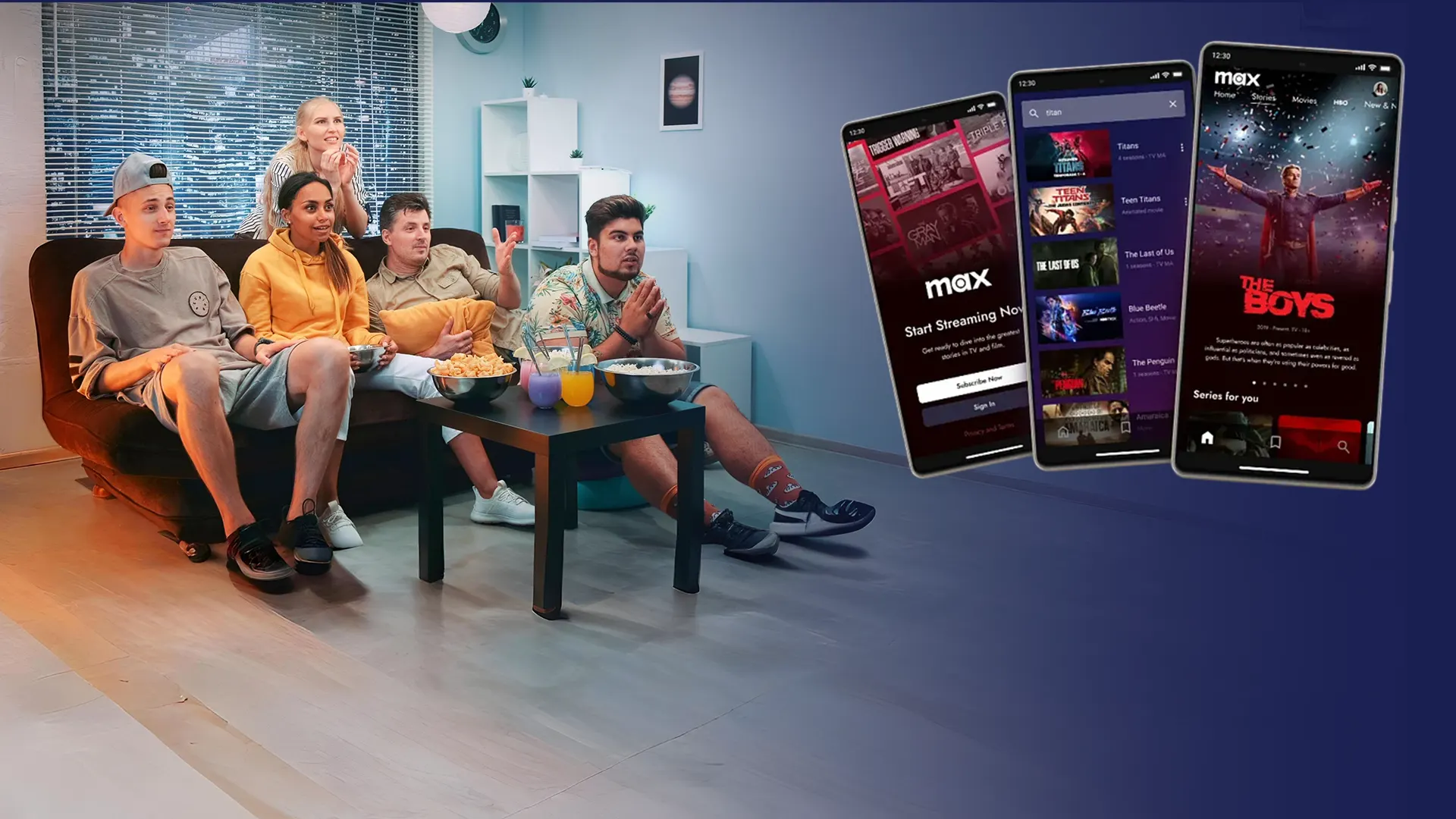
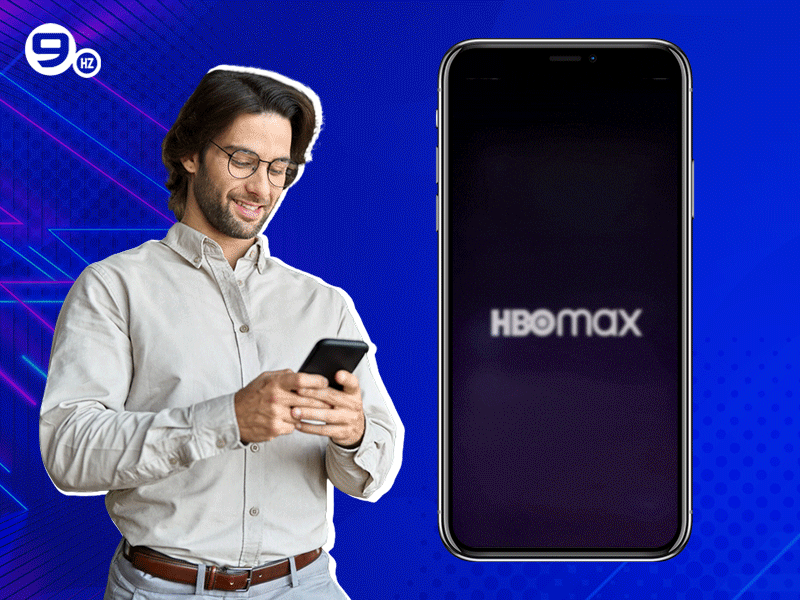
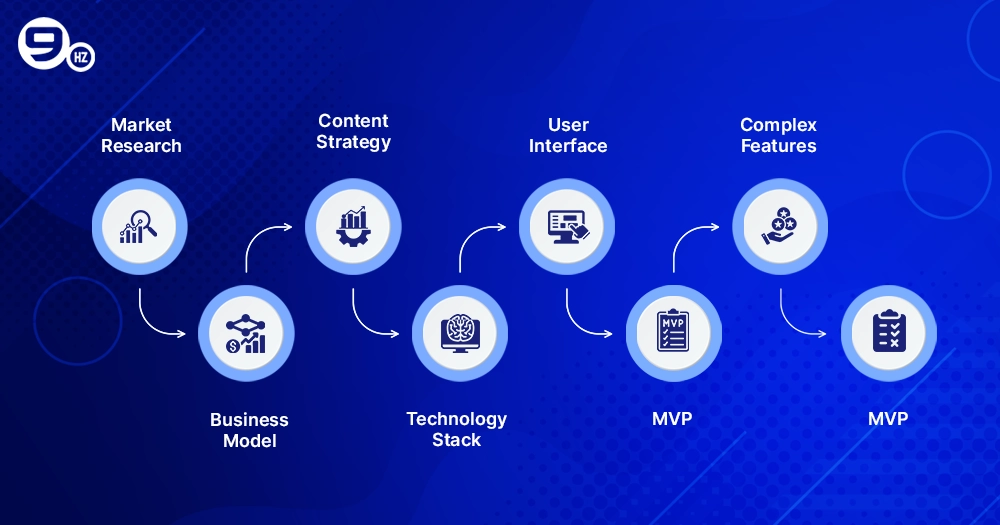
![How to Create an App like Careem? [Cost in 2025]](https://theninehertz.com/wp-content/uploads/2024/09/how-to-create-an-app-like-careem.webp)

![How to Create an AI-Powered Wellness App? [2025 Guide]](https://theninehertz.com/wp-content/uploads/2025/11/how-to-create-an-ai-powered-wellness-app.webp)
